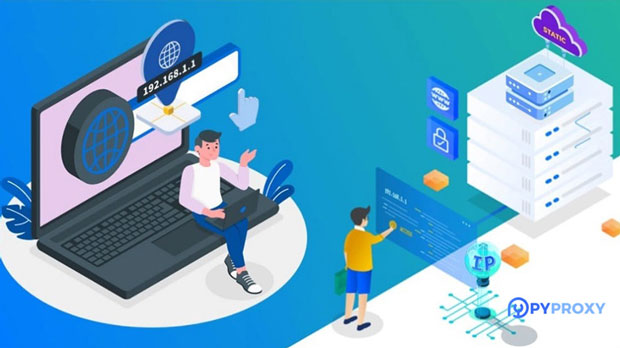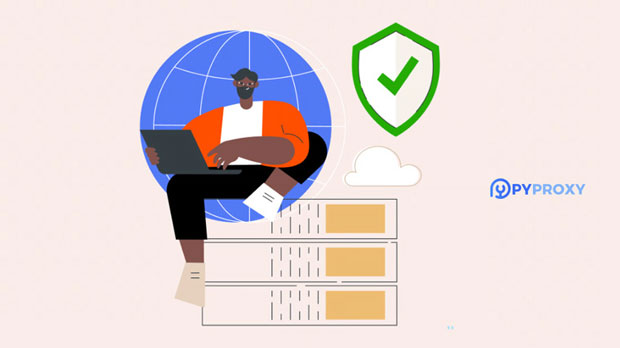When it comes to online privacy, security, and access to restricted content, proxies have become an essential tool. However, there is an ongoing debate between using free proxy lists and paid proxy services. Free proxy lists offer a seemingly convenient solution, but they come with numerous limitations, including security vulnerabilities, performance issues, and the lack of customer support. On the other hand, paid proxy services provide a more reliable, secure, and efficient experience, offering high-quality proxies with better support and customization options. This article will delve into the key differences between free proxy lists and paid proxy services, providing an in-depth analysis of their respective advantages and drawbacks. 1. Proxy Quality and ReliabilityOne of the most significant differences between free proxy lists and paid proxy services lies in the quality and reliability of the proxies. Free proxy lists are usually compiled from public sources, often containing proxies that are either slow, unreliable, or frequently blacklisted. As free proxies are shared by many users, their performance can degrade quickly, especially when accessed during peak times.In contrast, paid proxy services offer high-quality, dedicated proxies that are regularly maintained and monitored. These proxies are often faster, more stable, and less likely to be blocked by websites. Additionally, paid proxy services typically offer dedicated or rotating IP addresses, ensuring that users can maintain better anonymity and avoid detection by anti-bot systems.2. Security and PrivacySecurity is a critical factor when choosing between free and paid proxies. Free proxies often pose significant security risks because they are frequently operated by unknown or untrustworthy parties. There is a higher chance that your data may be intercepted, stolen, or monitored by the provider of the free proxy. Free proxy lists might also allow malicious actors to inject malware or track users' online activities.Paid proxy services, however, prioritize user privacy and security. Reputable paid providers offer encryption protocols to ensure that your data remains secure during transmission. They also implement stricter data protection policies to prevent any unauthorized access to your personal information. Many paid proxy services also provide additional features like IP rotation and masking, further enhancing your security and anonymity.3. Speed and PerformanceSpeed and performance are two other critical aspects that differ significantly between free proxy lists and paid proxy services. Free proxies often suffer from slow connection speeds due to heavy traffic. Since these proxies are shared among numerous users, the bandwidth is divided, leading to slower speeds and higher latency. This can be particularly problematic when using proxies for tasks such as streaming, gaming, or accessing content that requires fast and consistent connections.Paid proxy services, on the other hand, typically offer dedicated proxies that guarantee faster speeds and more stable connections. These services invest in high-performance infrastructure and provide users with proxies that have higher bandwidth and lower latency. As a result, paid proxies are much more suitable for activities that demand high-speed connections, such as web scraping, social media management, or online gaming.4. Customer SupportAnother area where free proxy lists fall short is customer support. Most free proxy providers do not offer customer service, leaving users to figure out any issues or troubleshoot problems on their own. Since free proxies are usually offered with little to no guarantees, if a proxy stops working or becomes blocked, users often have no recourse and are left without assistance.Paid proxy services, however, typically offer excellent customer support, ensuring that users can get help whenever they encounter issues. Many paid providers offer 24/7 support via multiple channels, including email, live chat, and phone. Additionally, paid services often come with service level agreements (SLAs), which guarantee a certain level of performance and reliability.5. Cost and AffordabilityWhile free proxy lists come with no cost, the trade-off is the numerous limitations discussed earlier. For users who require high-quality proxies for tasks like online business, security research, or bypassing geographical restrictions, the disadvantages of free proxies may outweigh the lack of cost. Moreover, as free proxies are often unreliable and insecure, users may end up wasting more time and resources trying to find and maintain working proxies.Paid proxy services, although they come with a cost, offer a wide range of pricing options depending on the type and level of service required. While the initial expense might seem high compared to free proxies, paid services offer a much higher return on investment in terms of reliability, performance, and security. Businesses and individuals who need consistent, high-performance proxies will find that the investment in a paid service is worthwhile.6. Access to Geo-Targeted ProxiesFor users who need access to geo-targeted content, free proxies are often insufficient. Free proxy lists typically do not offer specific geographic targeting, making it difficult to access content restricted to certain countries or regions. In some cases, the IP addresses from free proxies may be flagged by websites as coming from untrusted sources, making it even harder to bypass geo-blocks.Paid proxy services, however, often provide access to geo-targeted proxies. These services allow users to choose proxies from specific countries or cities, making it easier to access content that is restricted to certain locations. This feature is particularly useful for marketers, researchers, or businesses that need to simulate browsing from different countries or gather location-specific data.7. Legal and Ethical ConsiderationsUsing free proxies can sometimes lead to ethical or legal issues. Since free proxy lists are often sourced from unreliable or unauthorized providers, using them may put users at risk of violating terms of service agreements or engaging in illegal activities. For example, scraping websites or accessing copyrighted content through free proxies can result in legal consequences.Paid proxy services, by contrast, operate within the bounds of the law and comply with relevant regulations. Reputable paid proxy providers ensure that their proxies are used ethically and do not engage in any practices that could put users at risk. They also provide clear terms of service that outline acceptable use cases, ensuring that users can operate within legal boundaries.ConclusionIn conclusion, while free proxy lists might seem like an attractive option due to their no-cost nature, they come with numerous drawbacks that can compromise your online security, privacy, and performance. Paid proxy services, though requiring an investment, offer superior quality, speed, security, and customer support. They are ideal for users who need reliable and high-performance proxies for business, security, or personal use. Ultimately, the choice between free and paid proxies depends on the specific needs and priorities of the user, but for those seeking a secure and efficient online experience, paid proxy services are undoubtedly the better option.
Jul 30, 2025


































































